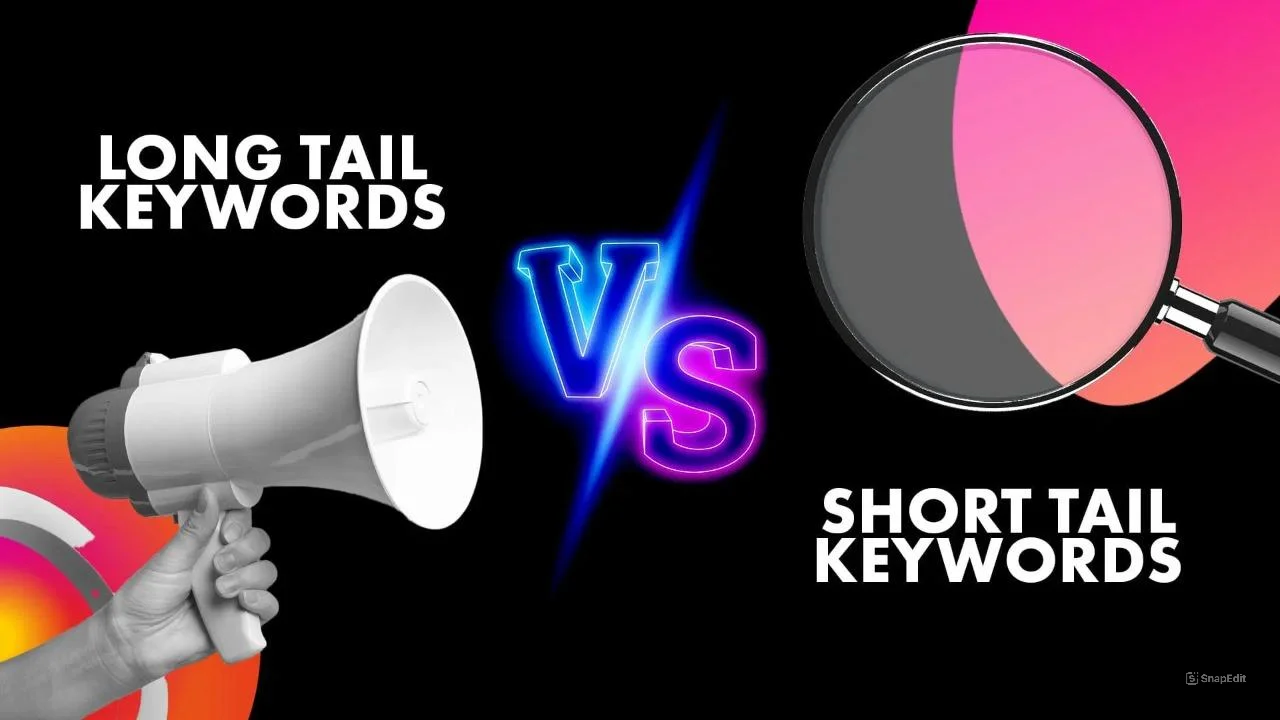Difference between short-tail and long-tail keywords
In the rapidly evolving landscape of digital marketing, understanding the nuances of keyword strategy is crucial for any business aiming to enhance its online presence. At Acetech Digital, we frequently encounter the question: Are long-tail or short-tail keywords better for SEO? Both types of keywords have unique advantages and drawbacks, and the right choice often depends on your business goals and target audience. We’ll explore the characteristics of long-tail and short-tail keywords, their impact on SEO, and how to effectively integrate them into your digital marketing strategy.
What Are Short-Tail Keywords?
Short-tail keywords are typically one to three words in length and are broad in nature. Examples include terms like “SEO,” “digital marketing,” or “running shoes.” These keywords usually attract a high search volume, meaning they are commonly used by people searching for general information or products. However, they also come with high competition, making it challenging for smaller websites to rank effectively.
Pros of Short-Tail Keywords
- High Search Volume: Short-tail keywords often bring a significant amount of traffic to your website.
- Brand Visibility: They can enhance brand recognition, as they are commonly searched and broadly relevant.
Cons of Short-Tail Keywords
- Intense Competition: Many businesses are vying for the same short-tail keywords, making it difficult to secure a top ranking.
- Low Conversion Rates: Because they attract a wide audience, short-tail keywords may result in lower conversion rates, as many users may not be in the buying stage.
What Are Long-Tail Keywords?
Long-tail keywords, on the other hand, are more specific phrases that usually consist of three or more words. Examples include “Best running shoes for flat feet,” “Affordable SEO services in Houston,” or “How to improve website visibility.” While they typically have lower search volumes, long-tail keywords tend to attract more targeted traffic and can result in higher conversion rates.
Pros of Long-Tail Keywords
- Lower Competition: Fewer businesses are targeting long-tail keywords, making it easier to rank higher in search results.
- Higher Conversion Rates: Users searching for long-tail keywords often have a specific intent, increasing the likelihood of conversions.
- Targeted Audience: Long-tail keywords attract users who are further along in the buying process and are looking for precise solutions.
Cons of Long-Tail Keywords
- Lower Search Volume: Long-tail keywords typically have lower search volumes compared to short-tail keywords.
- More Content Required: Creating content that effectively utilizes long-tail keywords may require more effort, as you’ll need to provide detailed and relevant information.
How to Choose Between Long-Tail and Short-Tail Keywords
When it comes to choosing between long-tail and short-tail keywords, consider the following factors:
1. Business Goals
If your primary goal is to generate traffic and increase brand awareness, short-tail keywords may be beneficial. However, if you are looking to improve conversion rates and engage a more targeted audience, long-tail keywords might be the way to go.
2. Audience Intent
Understanding your audience’s intent is key. Are they looking for general information, or are they ready to make a purchase? Short-tail keywords often attract users at various stages of the buying funnel, while long-tail keywords usually indicate a more specific intent.
3. Content Strategy
A well-rounded content strategy should incorporate both types of keywords. Short-tail keywords can help drive traffic, while long-tail keywords can improve engagement and conversions. Using both allows you to cater to different user needs effectively.
Best Practices for Using Long-Tail and Short-Tail Keywords
1. Keyword Research Tools
Use tools like Google Keyword Planner, SEMrush, or Ahrefs to identify relevant keywords for your niche. These tools provide insights into search volume, competition, and related keywords that can help you build a robust keyword strategy.
2. Create Quality Content
Whether you are targeting short-tail or long-tail keywords, producing high-quality content is crucial. Ensure your content is informative, engaging, and provides real value to your audience. This will help improve dwell time, reduce bounce rates, and enhance your website’s SEO performance.
3. Optimize On-Page SEO
Incorporate both short-tail and long-tail keywords naturally throughout your content. Use them in headings, subheadings, and within the body of the text. Ensure that your titles and meta descriptions are optimized with relevant keywords to improve click-through rates.
4. Monitor and Adjust
Regularly monitor your website’s performance using tools like Google Analytics and Google Search Console. Analyze which keywords are driving traffic and conversions, and adjust your strategy accordingly.
The Importance of User Experience
While keywords are crucial for SEO, providing a great user experience is equally important. Make sure your website is easy to navigate, loads quickly, and is mobile-friendly. Engaging content that answers user queries will not only help with SEO but also improve overall user satisfaction.
Conclusion: Long-Tail or Short-Tail Keywords?
Both long-tail and short-tail keywords have their place in a comprehensive SEO strategy. Short-tail keywords can help generate significant traffic and brand visibility, while long-tail keywords can enhance conversion rates and attract a more targeted audience.
At Acetech Digital, we believe that a balanced approach utilizing both keyword types is the most effective way to optimize your online presence. By understanding the strengths and weaknesses of each keyword type, you can tailor your content and marketing strategies to meet your specific business goals.
Don’t stop here! Ready to push your brand awareness with LinkedIn further? See how to take things to the next level right here.

